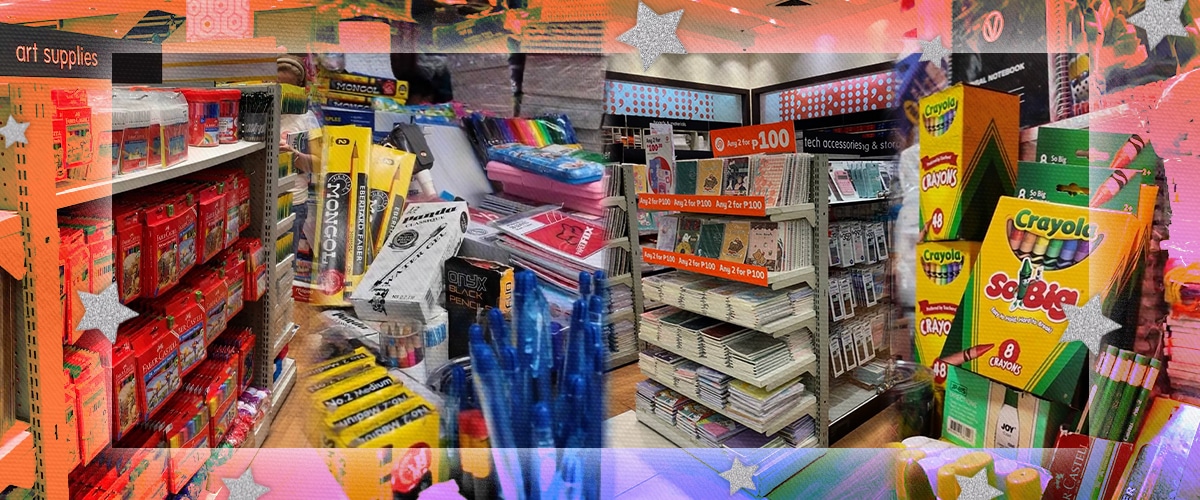SEVERAL Gen Zs have their stories of struggle in school, including the time when they had to write a whole report on a huge sheet of manila paper or a roll of cartolina.
Perhaps, some had memories of learning in class through an overhead projector, a heavy square-shaped device teachers used to project an image or text on a wall from a transparent sheet or a film.
But in today’s hi-tech world, school presentations no longer require traditional school supplies like manila paper or cartolina and old devices like the overhead projector. These can be done using a presentation software where students and teachers can input text and add media like images, videos, or music.
Additionally, we often see students studying and taking notes on their laptops or tablets in a cafe.
With many students having access to gadgets, does having the traditional learning tools still matter for students?
Importance of school supplies
Students have less than two weeks of vacation before classes begin on July 29, which will start the gradual return to the old academic calendar year. In preparation for the school year 2024-2025, shoppers began to flock to Divisoria, a popular commercial center in Manila that sells a variety of products at low prices, to purchase school supplies.
Among the shoppers RepublicAsia, a local news website in the Philippines, spotted in Divisoria were Journalism students Karyl Rael, Paul Bryan Bio, and Reyzel Mae Billocog from the Polytechnic University of the Philippines (PUP). The trio were looking for materials they would use for their school project.
The students said they chose to shop in Divisoria because it sells low-priced school supplies compared to the ones sold in malls.
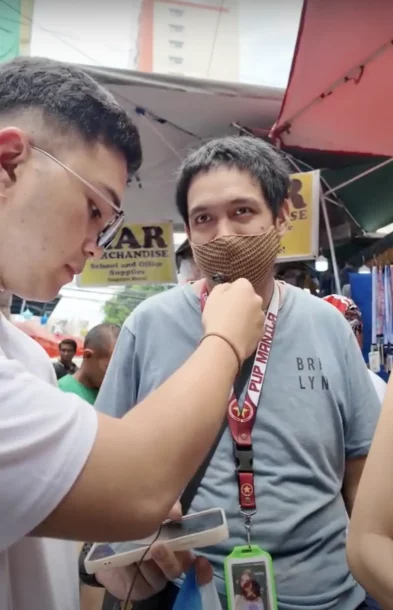
“Pwede rin po kasi siya tawaran, unlike sa mga malls na fix na yung price. Then, marami pong variety ng items na pwede pagpilian,” said Bio.
The trio shared that they still use school materials like binders, yellow pads, and pens, despite having easy access to technology. This way, they could focus more on their studies and recall the lessons they have learned from school.
“I think importante pa rin po yung [paggamit] po ng physical na writings kasi para po sa’kin, mas effective po siya sa school sa note-taking and mas na-e-exercise po ako, at the same time, mas naalala ko po yung mga lessons sa klase ko po with school supplies, unlike po sa mga gadgets po na nadi-divert yung attention [ko] sa social media,” Rael explained.
Bio and Billocog agreed with this and said that students could get easily distracted whenever they use gadgets in their studies, especially since social media, games, and other entertainment applications could be accessed with a few clicks.
“Mahalaga pa rin po yung paggamit ng mga school supply lalo na sa pag-take down ng notes. Kapag sa phone kasi madali tayong ma-distract, unlike kapag magre-review tayo sa notes doon lang tayo nakatingin,” said Bio.

Meanwhile, Billocog said, “Yung way po ng pagre-review [ko] is dinadaan ko sa sulat para mas maalala po. Kasi habang nagsusulat ka, [na-a-absorb mo] rin sa utak.”
Not all students are allowed to use technology during classes; sometimes, it depends on whether teachers or professors would permit them.
Senator Sherwin “Win” Gatchalian said in April that he was eyeing to file a measure that would ban students from elementary to senior high school from using their mobile phones in the classroom and during school hours. Several Gen Z approved this plan, saying that this move would help students focus more on the lectures.
If such a measure is passed into law, school supplies will continue playing a crucial role in helping students learn.
Divisoria vs. mall prices
The Department of Trade and Industry (DTI) released a price guide for school supplies this month, which includes specific brands of notebooks, pad papers, pencils, pens, coloring materials, erasers, sharpeners, and rulers.
It reported that prices of 68 percent or 80 out of the 117 stock keeping units (SKUs) remained the same. Meanwhile, eight percent had decreased prices, while 24 percent increased their prices.
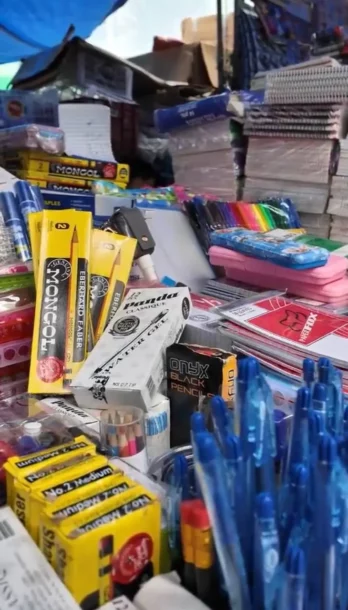
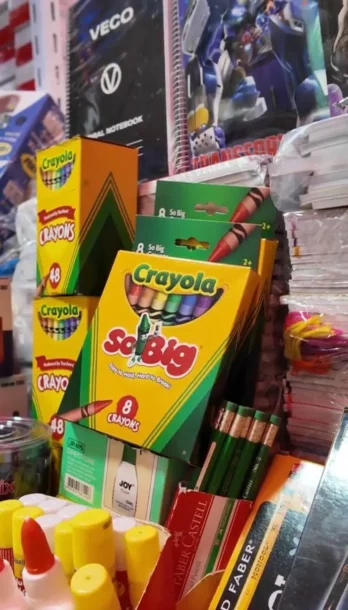
In Divisoria, pad paper costs P35, ballpoint pens at P10 per piece, pencils at P10 per piece, highlighters at P100 per bundle (six pieces) or P35 per piece, binders at P150, correction tape at P75, index cards at P35, glue at P35, and stapler at P45.
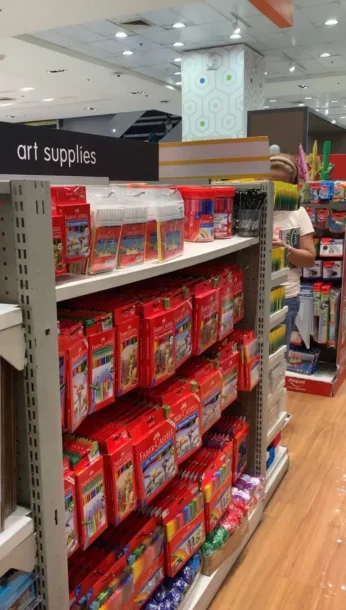
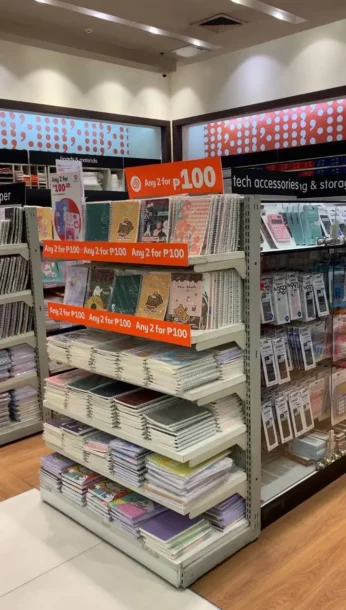
In a mall in Manila, pad paper costs P55, ballpoint pens at P21 per bundle (three pieces), pencils at P24 per bundle (three pieces), highlighters at P29 per piece, binders at P161, correction tape at P75, index cards at P27, glue at P29, and stapler at P69.
Melen Batica, a school supplies seller in Divisoria, said the prices of her goods decreased from last year. She also noticed that more shoppers visited the commercial center to buy school supplies this year.
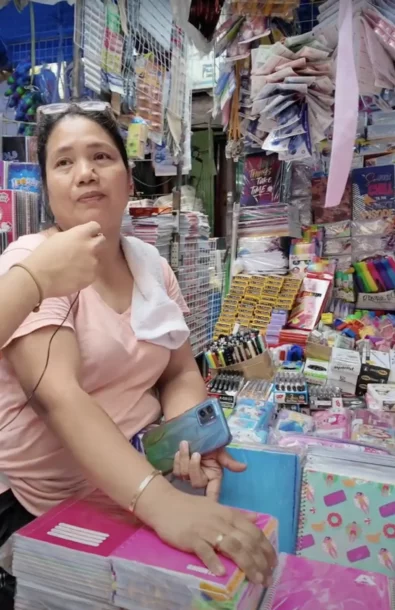
“Maraming-marami. Mga ipamimigay, mga barangay, yung mga maagang namimili,” she told RepublicAsia, adding that most buyers purchase color-coded notebooks.
Several schools in the Philippines require their students to use color-coded notebooks to organize notes and easily identify a certain subject, including major subjects in primary and secondary education like Math, Science, Filipino, and English.
“Usually itong color-coding [notebooks], ‘yan ang madalas na ginagamit para hindi na sila magbabalot,” she said. “Bihira lang yung mga may design-design.”
Batica advised shoppers to buy school supplies early to avoid large crowds in Divisoria.
Quality of products in Divisoria
Rael has been buying school supplies in Divisoria since high school and can attest that the products sold in the commercial center have good qualities that can be likened to the items offered in the malls.
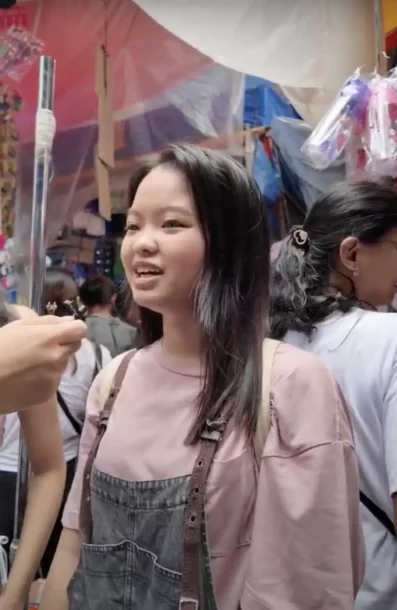
“From personal experience, na-test ko na rin naman po yung quality ng mga nabibili ko po rito, from high school [to] senior high, dito rin naman po ako bumibili and personally, quality din naman po siya and parang quality na rin siya ng mga [nasa] malls po,” the journalism student stressed.
Her budget for school supplies ranges from P500 to P1,000, but she said she tries to save some for her other expenses.
“Usually hindi naman siya nag-e-exceed [sa] P1,000, and as far as possible, pinagkakasya ko po sa P500 para may budget pa rin po ako sa ibang gagastusin like pamasahe,” said Rael.
Bio and Billocog have the same budget for their school materials, saying they opt to buy cheaper but quality products in Divisoria to save money.
“Sa akin po hangga’t maaari kung makakatipid naman, doon po ako sa mas mura talaga. Mas malapit po kasi ako sa mall, so, iniisip ko na mas malapit nga, mas mahal naman. I’d rather go to Divisoria para makapag-canvas ng mas murang gagamitin,” Billocog said.
For Bio, entering a new academic year does not mean they should buy new school supplies. Several materials from the previous school year can still be reused this year, he added.
PH Guidelines for S.Y. 2024-2025
On Monday, the Department of Education (DepEd) released the guidelines for activities for the school year 2024-2025, which will begin on July 29 and end on April 15, 2025.
Under the DepEd Order No. 009 series of 2024, enrollment in public elementary and secondary schools, including community learning centers (CLCs), for the new school year began on July 3 and will end on July 26.
The DepEd scheduled the Brigada Eskwela, or the nationwide school maintenance program, on July 22 to 27. Meanwhile, the Oplan Balik Eskwela, where issues and concerns about the school year will be addressed, will be done from July 22 to August 2.
There will also be a five-day midyear school break, from November 25 to 29, and a Christmas break from December 21, 2024 to January 1, 2025.
The End-of-School Year rites will be conducted from April 14 to 15.
The order said that private schools and state universities and colleges “may adopt” the DepEd’s guidelines and “shall follow the provisions stipulated under RA 11480 concerning the required number of class days and the opening of the SY.”
“Schools shall report any inevitable deviation from these guidelines in advance to their respective regional offices (ROs),” it added.
The Philippine government is eyeing to return to the old June-March school year by 2025.
Related stories: Things to expect on your first day of school
How useful was this post?
Click on a star to rate it!
Average rating 0 / 5. Vote count: 0
No votes so far! Be the first to rate this post.
We are sorry that this post was not useful for you!
Let us improve this post!
Tell us how we can improve this post?

